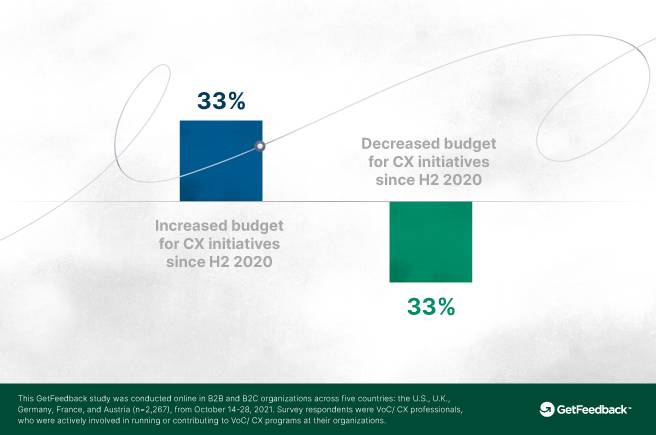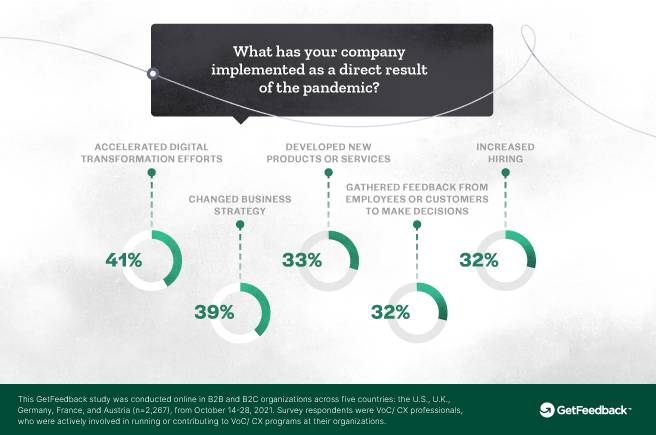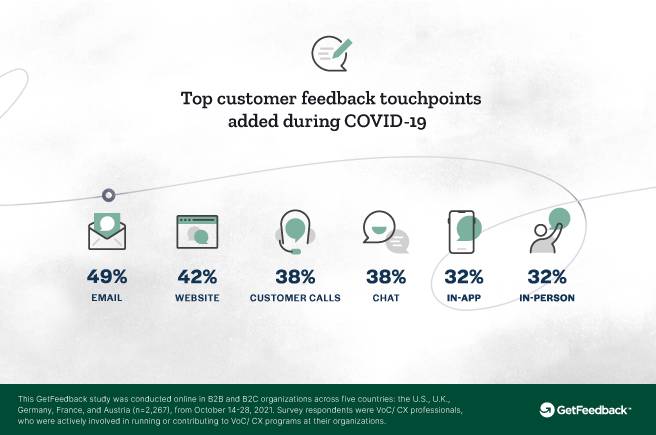The pandemic has driven changes to customer experience that we could never have expected. Learn what’s changed and what’s here to stay.
Customers experience the world differently now than before the onset of COVID-19. The significant disruptions in how we work and live have lasting impacts on what customers expect and how customer experience (CX) leaders must deliver on those expectations.
It’s remarkable how businesses adapted to change in record time. Digital transformations that initially required five or more years of planning were delivered to customers within weeks of the original lockdowns. Leaders who had vowed to maintain an in-person workforce realized remote work could be successful well long-term. We all adapted to health and safety behaviors as we navigated the new landscape.
What didn’t work in the tough times? Customers were scrambling to get the items they needed. Shipments were delayed. And digital demand was overwhelming for organizations that hadn’t focused on the digital experience.
Yet the long-lasting impact of COVID-19 pivots could serve more customers in better ways for many years to come. In this article, I’ll cover key COVID-19 impact findings from the The 2022 State of CX Report by GetFeedback.
The majority of CX professionals report adapting well to COVID-19
That’s the hopeful message for CX leaders as reported in The 2022 State of CX Report by GetFeedback. As time marches on, much of what changed continues to create unprecedented journeys for customers and employees alike. Innovative leaders can look to these identified areas of change and prioritize how to address them.
Despite the rapid changes, the vast majority of respondents in both Europe (70%) and the U.S. (80%) claim to have adapted “well” or “very well” to COVID-19.
In the report, there was also an equal split between companies that increased or decreased their budgets since the second half of 2020.

There were five areas of change identified in the report.
-
Accelerated digital transformation efforts
-
Changed business strategy
-
Developed new products or services
-
Gathered feedback from employees or customers to make decisions
-
Increased hiring
Let’s dive into each one.
1. Accelerated digital transformation efforts

Customer experience leaders have focused on digital transformation for years. Taking a customer-centric approach with digital journeys that support both the customer and the organization requires enormous efforts like moving from backend legacy data systems to centralized data platforms.
Yet with the world moving from in-person to digital-only nearly overnight, brands of all kinds had to figure out how to serve their customers by leveraging digital channels and creating new ways of working.
Today’s customers are accustomed to digital experiences that were offered before the pandemic, but not utilized. Digital experiences were in demand and customers were willing to try new things. According to McKinsey & Company:
-
Three out of four American consumers have shifted shopping behaviors
-
Online purchases grew by 20% to 40% in most categories
-
E-commerce sales continue to increase by nearly 35% year over year
Customers expect well-designed omnichannel experience as they navigate your online channels. Digital transformation is not really about the digital experience. It’s about enabling a seamless experience across every channel, so a customer can move from one to the other and be recognized, understood, and proactively served.
The 2022 State of CX Report found 41% of respondents had accelerated digital transformation efforts as a direct result of the pandemic. That means more than half were either already dedicated to these efforts or hadn’t yet committed to them.
Building coalitions across the organization continues to be critical for CX leadership success. To improve virtual experiences, CX leaders need to work cross-functionally with leaders in technology, data, marketing, and more. This also requires buy-in from the C-Suite and resources to support these efforts.
Not surprisingly, CX professionals whose budget decreased since the second half of 2020 are less likely to say they have executive buy-in for their CX initiatives than those who received an increase in budgets.
Next year’s report will most likely include a similar priority, even if it’s not a result of the pandemic any more.
2. Changed business strategy
Change was the name of the game over the past two years. Businesses had to adapt, learn fast, and pivot to maintain momentum during uncertain times.
Some new strategies are here to stay. Many organizations have publicly announced how they will continue to focus on new outcomes and communicate differently to both customers and employees. For example, hospitality, healthcare, and personal service industries––like hair salons and spas––had to adapt to local rules concerning health and safety.
Customers expect more transparency, and many still make purchasing decisions based on how COVID-19 regulations are communicated.
Many leaders also view strategy around disaster recovery and business continuity differently. In a commissioned report from Google by IDG, financial services leaders reported wanting to create a new strategy or accelerate their existing strategy for recovery and continuity. Retail leaders accommodated for remote working and collaboration capabilities.
Customer experience leaders need to adjust the design and implementation of customer journeys, including access to health, safety, and disaster recovery information. They must focus on the wellness of their employees and the workplace itself. There will continue to be emphasis on the connection between happy employees and happy customers as The Great Resignation and workplace wellness impact the health of an organization.
3. New products and services
Leading organizations developed services to support the needs of their customers like curbside pickup and more options for home delivery.
From mask and vaccination mandates to in-person and hybrid work, customer’s lives have altered significantly. These day-to-day life changes continue to drive product innovation.
As more customers stayed at home, subscription services and direct-to-consumer experiences meant success for brands and customers alike. Big brands like Unilever and retailers like Target invested in or acquired subscription service brands. Nike, which had already been dealing more with direct customer relationships through their apps and ecommerce options, invested in the direct-to-consumer digital options and saw their ecommerce sales increase by 82%!
Customer experience leaders also had to shift due to supply chain and inventory disruptions. Car sales declined in 2020 and many dealers had a surplus of inventory on car lots.
Now, dealers are more likely to communicate with customers through digital channels and order the specific car with their customized features so it never sits on the lot. Established brands like Toyota and Lexus now allow shoppers to complete the entire buying process digitally.
Research by Cox Automotive, parent company of Kelley Blue Book, showed 86% of shoppers opted for online shopping to save time at the dealership. Adding additional purchase paths have increased customer’s satisfaction. Seventy-four percent of new car buyers reported being happier now, compared to 62% from the past year.
The customer experience may have been forced to change because of the restrictions and disruptions caused by COVID-19, but some alterations were clearly a better outcome for customers. These success stories show customers are finding what they need, when and where they need it. It’s all about understanding the customer journey, and not relying on what’s always been done.
4. Companies implemented feedback programs to make strategic decisions
Communication with customers gained critical importance during the pandemic. Brands had to gather feedback from customers and employees and provide updates quickly and effectively.
You might recall those early days of 2020 when inboxes filled with updates from every brand you’ve ever interacted with a subject line akin to “here’s what we’re doing to keep you safe.”
But customers also asked for more methods to stay in touch, and CX professionals found ways to accommodate that. The 2022 State of CX Report noted that nearly 60% of CX teams added additional customer feedback touchpoints during COVID-19. Customers were able to provide feedback and communicate with brands via traditional methods like email, but more and more in ways like chat and in-app communication.

Leveraging customer feedback and data like purchase history led to more personalization. Seventy-three percent of respondents reported increasing their efforts to deliver a personalized experience to customers, with the main approaches employing customer surveys to gather the right information.
Leaders who don’t have fully realized customer feedback programs still can use customer feedback. Online customer reviews that aid purchasing decisions have soared since pre-pandemic days. The appetite for reviews continues to drive customer behavior, and smart leaders can use all sources of feedback to keep a finger on the pulse of real-time expectations while increasing sales. When customers interact with reviews, they’re 25% more likely to convert than pre-pandemic.
Frankly, it’s about time business leaders listen to customers and make decisions based on their feedback. CX leaders and teams are leading the way here and will continue to do so.
5. The pandemic has increased hiring
The focus on customer experience means requiring more workers to deliver on the customer journey. Customer service operations have needed more employees to engage with customers seeking more support.
The shifts in both service levels and how customers engage with brands through channels like social media, text services, and online chat, lead to more significant questions about how customer support teams are supported themselves.
Beyond just customer support, the drive for employees has become a top priority in many industries experiencing record numbers of resignations. That leads to another reason to get the employee experience right from the start.
The employee journey needs to align with the customer experience. Employees need to feel aligned with the purpose and mission of the organization and feel fully included for who they are, not just the skills they bring. The global consulting firm Korn Ferry recommends “delivering customer grade experiences at work” for employees. I agree.
Brands must understand the employee journey starting and identify key moments to build trust and loyalty, just like the customer experience. This focus on not just hiring for hiring’s sake but starting a relationship built on trust, purpose, and inclusivity will lead to employee retention and loyalty.
Customer experience leaders who partner with human resourcescan ensure best practices are applied to both the customer and employee experiences. Talent acquisition and retention will be a changing landscape due to market shifts. But leaders who focus on long-term foundations like a customer experience mission and employee engagement best practices are more likely to build the right team for the right moment.
These changes are here to stay
The pandemic led to extraordinary and, dare I say it, unprecedented changes. Yet customer experience leaders and teams found ways to adapt well to these changes by staying focused on the customers they serve.
The best practices around feedback strategy still apply and prove how investing in the customer experience means achieving business results. Gathering, understanding, and acting on feedback from customers and employees is a winning strategy no matter what is happening in the world.
Check out more findings from The 2022 State of CX Report to learn more.
Republished with author’s permission from original post.



